

Uh oh...
It appears that you're using a severely outdated version of Safari on Windows. Many features won't work correctly, and functionality can't be guaranteed. Please try viewing this website in Edge, Mozilla, Chrome, or another modern browser. Sorry for any inconvenience this may have caused!
Read More about this safari issue.

In Arkansas’s territorial days and early statehood, much of the state’s wealth and political power could be traced to one extended family. This group, who became known by the moniker “The Family,” were related by blood and marriage and managed to control Arkansas’s power for much of the nineteenth century before the Civil War broke their tight grasp on the state. To this day, the power of ‘The Family’ is still seen through place names, history, and family legacies.
The power of “The Family” started not in Arkansas but in the neighboring state of Tennessee. Henry Wharton Conway was one of ten children in the Conway family. He served in the War of 1812 and then worked for the U.S. Treasury Department. He eventually found his way to Arkansas in 1820 while it was still a territory. With his financial background, Conway secured a job at the Land Office. Missouri Territory became a state in 1821, and when this happened, much of its southern territory became Arkansas territory. Conway was involved with transferring land from the U.S. government to private landowners.
The U.S. government was concerned with setting up a territorial government in Arkansas Territory. The first territorial governor, James Miller, arrived for his appointment and found two friends had already started appointing people to positions in the new territory. These friends were Robert Crittenden and Henry Conway. Crittendon had been appointed Secretary of Arkansas, but he arrived before Miller and served as acting governor.
While Crittenden made appointments to various offices, Conway ran for the office of Delegate to the U.S. House of Representatives. He won his first election in 1822 with the support of Robert Crittenden. Conway served for four years, from 1823 to 1827, winning two more elections to keep the seat. In the last election in 1927, while defending himself from political attacks by his opponent that he had misappropriated funds, Conway implicated his friend Crittenden in the financial misdoings. Crittenden denied this, but this scandal caught fire and captivated the state for several months as the two former friends traded barbs and accusations.
Crittenden eventually challenged Conway to a duel. They gathered on the morning of October 29, 1827, and fired pistols at each other from a distance of ten yards. Conway’s bullet grazed Crittenden’s coat and left him unharmed. Crittenden’s aim was better. His bullet struck Conway in the ribs on the right side, producing what the Arkansas Gazette called “a severe, but not dangerous, wound.” Still, the bullet wound was enough to overcome Conway. He died 11 days later on November 9, 1827.
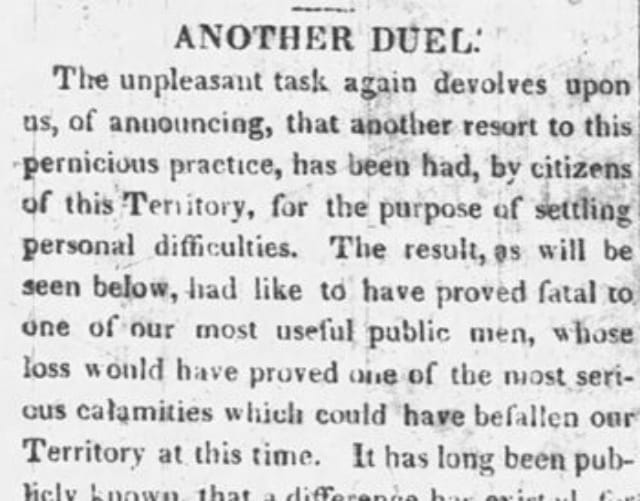
This excerpt from the “Arkansas Gazette” on November 6, 1827, recorded the events of the duel and seemed optimistic about Conway’s recovery. Conway died three days later from his injuries.
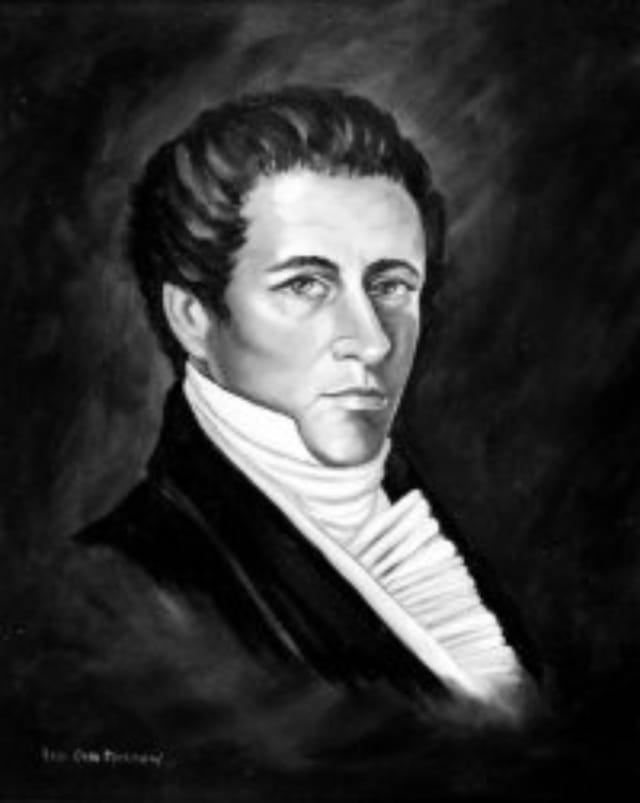
James Conway, Arkansas’s first governor and Henry Conway’s younger brother.
Although Henry Conway was dead, he instigated the beginning of the grip on power held by “The Family.” Conway’s younger brother, James, had also arrived in Arkansas in 1820. James was a land surveyor and was involved in surveying the western boundary of Arkansas Territory. It was later found that the younger Conway had increased the territory’s size by 100,000 acres by slightly adjusting his survey. When his older brother was killed, James Conway, his cousins Elias and Wharton Rector, and another cousin, Ambrose Sevier, all allied themselves politically against Crittenden.
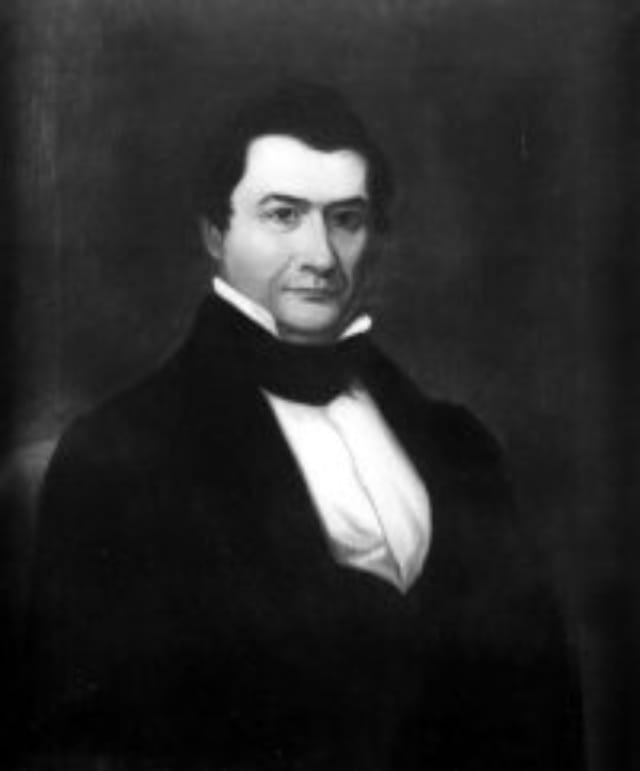
Ambrose Sevier was a cousin to the Conways through his mother’s side and had settled in Arkansas in 1821. He was the clerk for the territorial House of Representatives, passed the bar exam to become a lawyer, and won an election for a seat in the territorial house. One month before his cousin was killed in the duel, Sevier married Juliette Johnson, the daughter of Judge Benjamin Johnson. The Johnson family already held a good deal of political power in Arkansas Territory. When Henry Conway’s seat as a U.S. representative opened after his death, Sevier won it in a special election. Sevier’s new political power, combined with the power of his wife’s family, cemented his central role in “The Family.” Sevier became linked with Indian Removal as he supported President Andrew Jackson’s plans. He put forth the proposal for Arkansas statehood and then became a U.S. senator.
Meanwhile, the Rector brothers, Elias and Wharton, also made their marks in the state. Wharton became the Adjutant General of the Arkansas Territorial Militia. This militia eventually became the Arkansas National Guard. Elias Rector took a different direction and became a U.S. marshal for Arkansas and Indian Territory. President Andrew Jackson appointed Rector to the position, and Rector served for 16 years. Rector was directly involved in relocating the Seminole tribe from Arkansas to Oklahoma. He also founded the Wichita Agency in Oklahoma. At the time, Indian agencies facilitated communication between tribes, communities and governments.
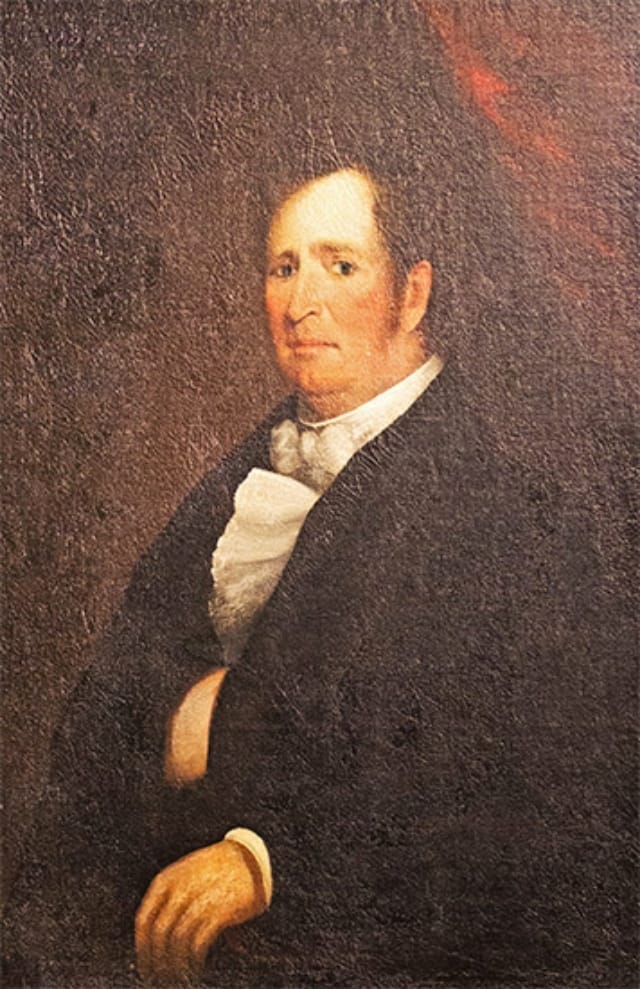
During this time, the younger Conway, James, continued to survey, eventually becoming the surveyor-general in Arkansas Territory. He stayed close to the political power of his family, and when the territory became a state in 1836, Conway ran for governor and won. He served as the new state’s first governor for four years.
A second generation of Arkansas politicians came through “The Family’s” sons. Robert Ward Johnson, from the powerful Johnson family, was a U.S. congressman and senator. Ironically, it was Elias Nelson Conway, the seventh governor of Arkansas and James and Henry’s youngest brother, who appointed Johnson to his senatorial seat. Elias Conway moved to Arkansas in 1833, following in the footsteps of his older brothers. He served as the state’s auditor from 1836 to 1849. He was elected governor in 1852 and served two terms. The power “The Family” held over state politics eventually loosened with the beginning of the Civil War. Once the war ended, the alliance of the Conway-Johnson-Sevier-Rector families never regained the power they once held.
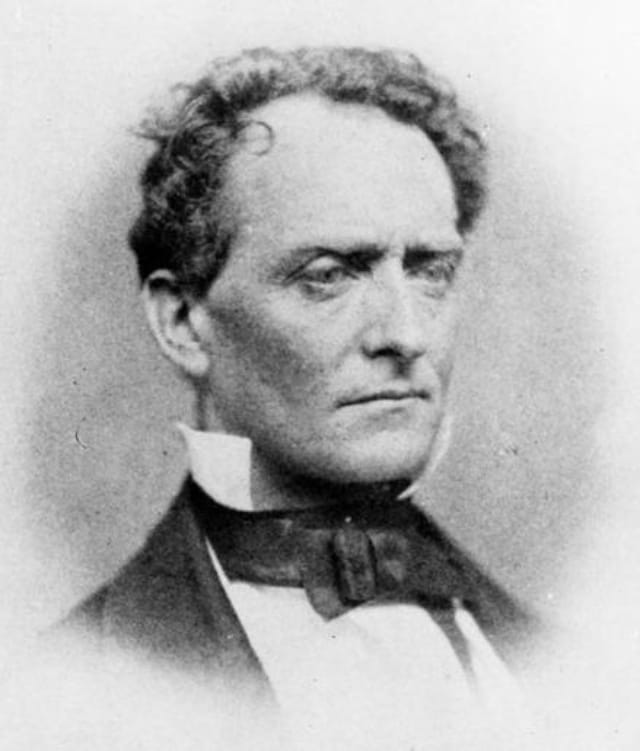
However, these names live on in Arkansas history and Arkansas place names. Johnson, Conway and Sevier Counties are all named for “The Family.” The cities of Conway and Rector are also named for “The Family.” For better or for worse, these extended cousins, this family formed through blood, marriage, and political alliances, made their permanent marks on Arkansas history.
Header photo: By Stephen Harriman Long – UTA Libraries Cartographic Connections via Wikimedia.
Join the Conversation
Leave a Comment
2 responses to ““The Family” of Arkansas’s Early Days”
 Leave a Reply
Leave a Reply
We do the work.
You check your email.
Sign up for our weekly e-news.
Get stories sent straight to your inbox!












 Leave a Reply
Leave a Reply
[…] in the company of Archibald Yell (Arkansas’s second governor), Ambrose Sevier (a member of “The Family” and a U.S. Senator from Arkansas), William Fulton (Arkansas’s last territorial governor) and […]
[…] brought seeds for domesticated apples to Arkansas. As early as 1822, reports mention apples on James Sevier’s farm, but the varieties grown in the Ozarks marked the state as a powerhouse fruit producer. The early […]